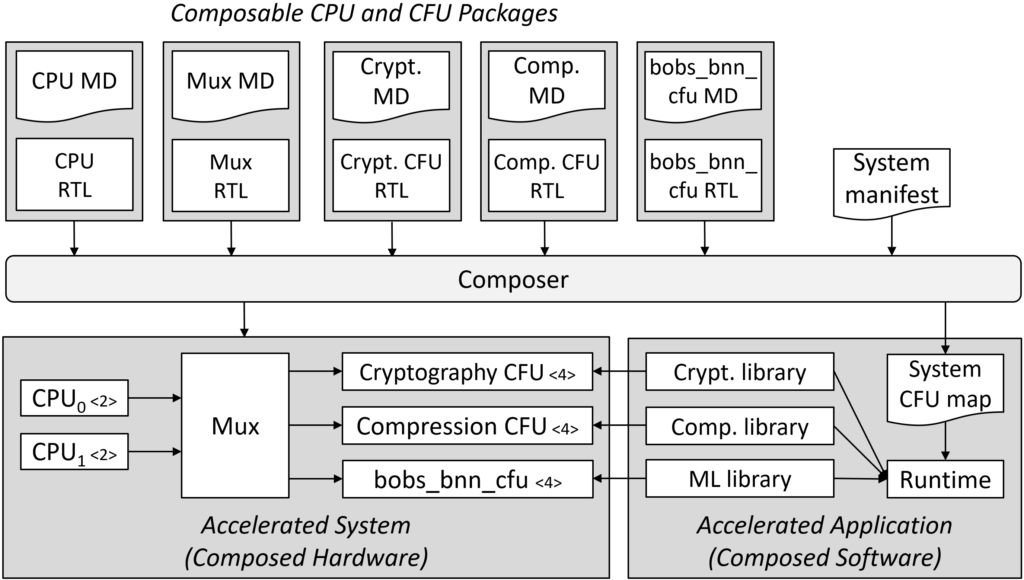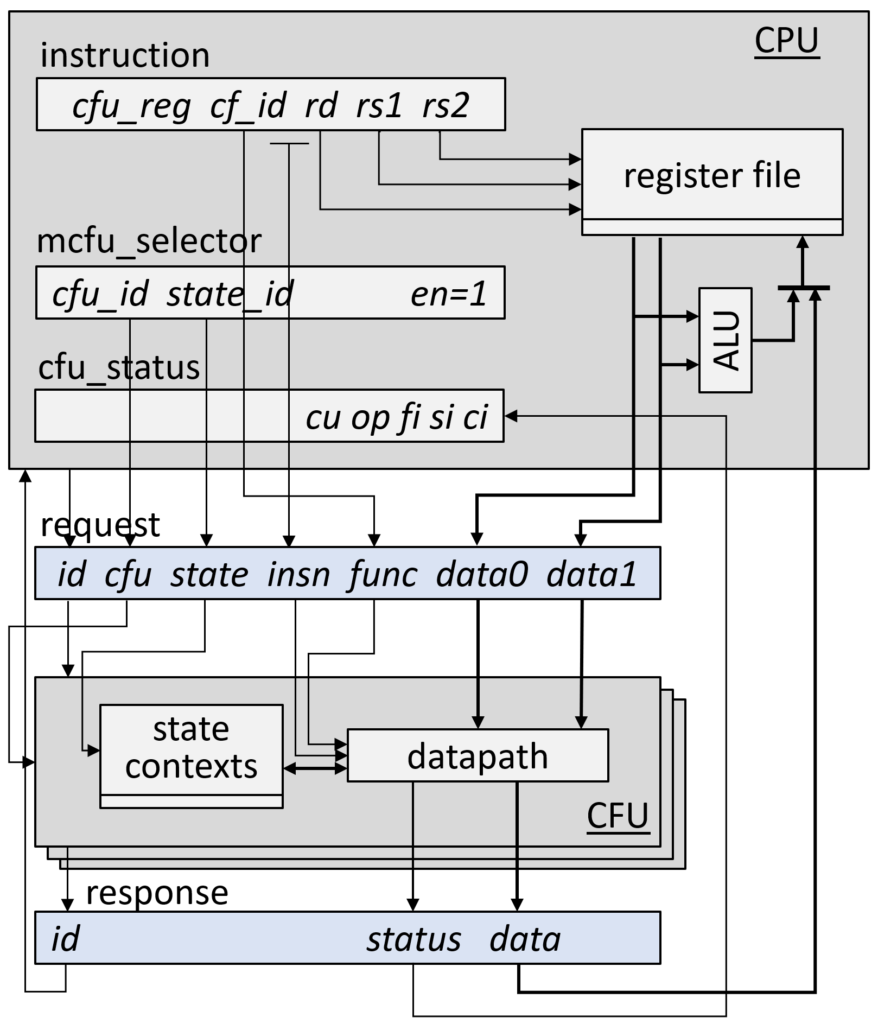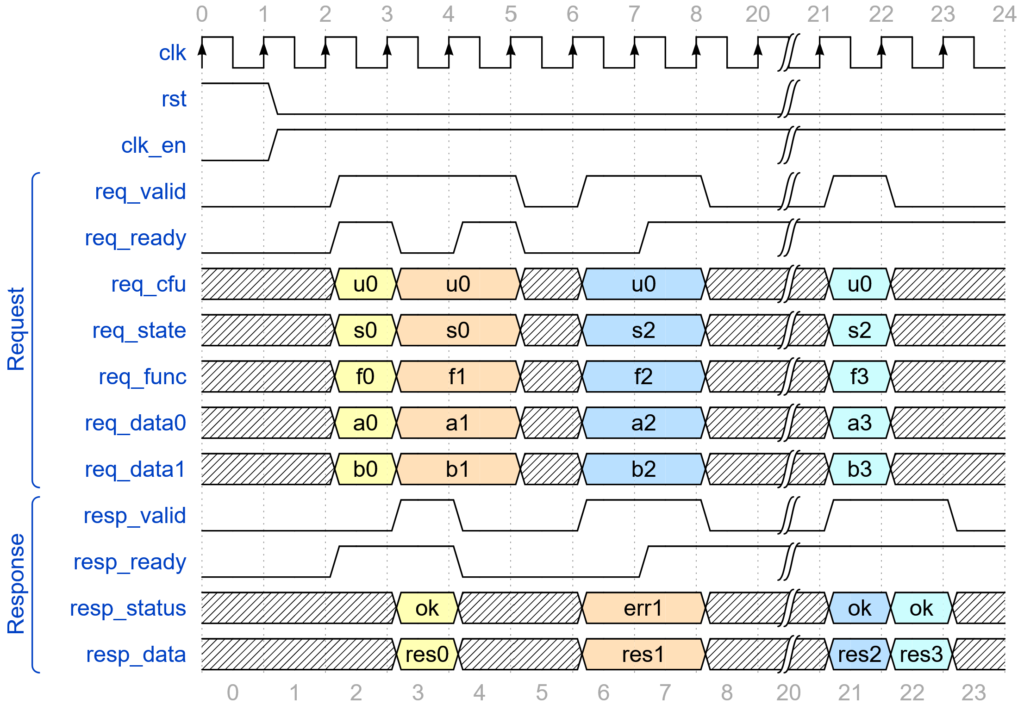Today’s The Register article by Agam Shaw, RISC-V takes steps to minimize fragmentation, discusses RISC-V International’s efforts to grapple with the RISC-V instruction set architecture’s growing pains as its diverse community strives to apply and optimize RISC-V to many different use cases.
There is a fundamental tension between development of new RISC-V optional standard extensions which must be non-proprietary, of broad interest and general utility, which may take years to reach consensus and ratification, and which consume a shared, limited resource (RISC-V encoding space and overall complexity), versus development of a custom extension, which may be the work of one party, in house, in one day, narrowly targeted, and/or proprietary. Both are valuable and necessary. However, RISC-V does not currently provide means to make these custom extensions, their hardware implementations, and their software libraries, reusable and interoperable, which does silo solutions and fragments the ecosystem.
Imagine you could combine the guaranteed correct composition of the optional standard instruction set extensions, and the agility of custom extensions. For several years, a small group of RISC-V FPGA soft processor developers and users have met informally, on and off, working towards this vision.
We (see Preface for contributors) now have a Draft Proposed RISC-V Composable Custom Extensions Specification ready for public review and discussion. Even though it is still a work-in-progress we hope it helps inform discussion of this issue of RISC-V custom extensions and interoperation vs. fragmentation.
This first edition of the spec focuses on the prerequisite common HW-HW and HW-SW interfaces, formats, and metadata required to achieve robust automatic composition of custom extensions. Notably the spec includes a chapter on the Custom Function Unit Logic Interface, a HW-HW interface for composable custom function units that plug-and-play into different processors and systems. Beyond this spec, much work remains to define the software stack and software tooling above these interfaces, flesh out the Runtime, etc.
We just submitted a one page abstract for a poster which we hope may be presented and discussed at the upcoming 2022 Spring RISC-V Week in Paris. If the 50 page spec is daunting, this one page TLDR abstract attempts to provide a brief overview of some objectives and contributions of the work.
I recapitulate the poster abstract below. For more detail, see the spec.
UPDATE: the poster was accepted. Here is the poster (PDF) and here is a video narration of the poster: Composable Custom Extensions and Custom Function Units for RISC-V.
To get involved with this work, stay tuned, we will set up a public mailing list for discussions momentarily (and update this paragraph). Also please raise your spec concerns and suggestions in the Issues list. Thank you for your interest. Onwards!
Whenever we specify new a custom extension, implement it as a custom function unit, or target it as an accelerated library, let us do so using common, standardized interoperation interfaces so that it may “just work” with all RISC-V CPUs and the other standard and custom extensions.
Composable Custom Extensions and Custom Function Units for RISC-V (Poster Abstract submited for 2022 Spring RISC-V Week)
Jan Gray (Gray Research) , Tim Vogt (Lattice Semiconductor), Tim Callahan (Google), Charles Papon (SpinalHDL), Guy Lemieux (University of British Columbia), Maciej Kurc (Antmicro), Karol Gugala (Antmicro)
This poster introduces a draft specification for composable custom instruction extensions in RISC-V. The RISC-V custom instruction encoding space is unmanaged, leading to potential conflicts when combining different accelerators and their libraries into one system. This specification defines interop interfaces including a physical logic interface and CSRs that manage the composition of multiple, independently developed custom instruction extensions. Contributions include custom interface multiplexing and stateful but isolated state for multiple harts sharing multiple custom function units (CFUs).
Today, custom extensions don’t interoperate
SoCs may use app-specific hardware accelerators to improve performance and energy – particularly so with FPGA SoCs that offer plasticity and abundant spatial parallelism. The RISC-V ISA explicitly supports domain-specific custom extensions.
There are many RISC-V processors with custom instruction extensions, and now some vendor tooling. But the accelerated libraries that use these extensions and the cores that implement them are authored by different organizations, using different tools, and may not work together. Different custom extensions may conflict in use of opcodes, or their implementations may require different CPU cores, pipeline structures, logic interfaces, models of computation, means of discovery, context switching, or error reporting. Composition is difficult, impairing reuse of hardware and software, and fragmenting the RISC-V ecosystem.
Unleashing innovation in interoperable custom extensions
RISC-V International uses a community process to define a new standard extension to the RISC-V ISA. New extensions must be of broad interest and utility to merit allocation of precious RISC-V opcode space, CSR space, and generally to add to the enduring complexity of the platform. New extensions typically require years to reach consensus and ratification. Each coexists with all other extensions. Might any new custom extension also safely coexist (compose) with all extensions? Might there be a rich ecosystem of plug-and-play custom extensions? Yes!
Our proposed interop interfaces allow any party to rapidly define, develop, and use:
- a custom interface (CI): a custom extension consisting of a set of custom function (CF) instructions,
- a custom function unit (CFU): a composable hardware core that implements a custom interface,
- an accelerated CI library that issues custom instructions,
- a processor that can mix and match any CFUs (plural), and
- tools to create and compose these elements into systems.

Custom interfaces, their CFUs and libraries, may be open or proprietary, even of narrow interest. Anyone can mint a new one. A new CPU core can use existing CFUs and libraries. A new interface, CFU, or library can be used by existing CPUs and systems. Many CFUs may implement a given custom interface, and many libraries may issue instructions of a custom interface.
Such composition requires routine integration of separately authored, separately versioned elements into stable systems that just work together, now, and over time, as elements evolve. To ensure composition does not change the behavior of any interface, interfaces’ state contexts are isolated: a CF instruction only accesses its source operands and its current state context.
Custom interface multiplexing
Custom interface multiplexing provides an inexhaustible, collision-free opcode space for custom instructions without any central opcode authority. Every new interface can use any or all of the custom-0/-1 opcode space. Each accelerated CI library, prior to issuing any custom instructions, calls a runtime to obtain that interface’s (CFU,state) selector value and write it to a new mcfu_selector CSR. This selects the hart’s current interface (and CFU core) and its current interface state context. Like the vector extension’s vsetvl instruction, an mcfu_selector write configures the behavior of custom instructions that follow.

Custom function unit logic interface (CFU-LI)
A CPU executes a CF instruction by sending a CFU request to a CFU, carrying context IDs and operands. The CFU processes the request, may update its state, and sends a CFU response, which updates a destination register and the cfu_status CSR.
The CFU-LI defines standard signaling and metadata for combinational, fixed-latency, and variable-latency CFUs, so that CPU and CFU packages may be automatically composed.

